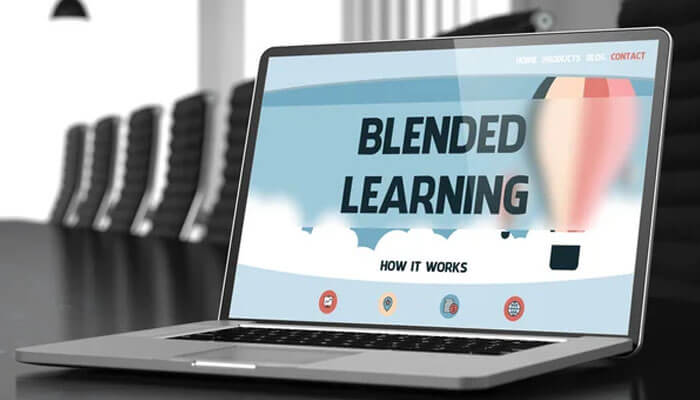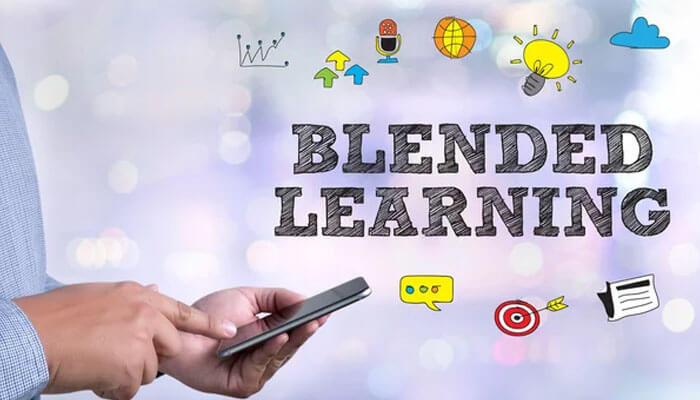In the quickly changing educational landscape, new methods and approaches are always emerging to improve the learning experience and better prepare students for success. Learning that is blended provides a dynamic and personalized educational experience that caters to the needs of varied learners by combining traditional classroom instruction with online learning components. In this article, we will delve into the concept of blended learning, its benefits and challenges, and how it’s shaping the future of education.
Unfortunately, some students choose to pay for homework help. You’ll also be happy to know that by hiring online tutors and requesting that they pay someone to do my homework. Additionally, reputable academic services like Scholarly Help, Brainly, and Chegg now offer the ability to choose an online instructor
Defining Blended Learning
Learning that is blended: this cutting-edge educational technique, often known as “hybrid learning,” combines conventional in-person classroom instruction with online educational activities. This strategy tries to combine the benefits of both in-person and virtual learning to provide students with a full and interesting educational journey.
The Evolution of Education
It’s no wonder that schooling has changed as technology continues to influence different facets of our lives. Learning that is blended is a direct response to students’ shifting demands and preferences as they become more accustomed to digital tools and platforms. This method acknowledges that learning does not have to be limited to the classroom and can extend beyond its physical borders.
The Components of Blended Learning
1. In-Class Instruction
Traditional classroom instruction is still an important component of the blended learning strategy. Face-to-face contact between teachers and students allows for instant clarification of issues, group discussions, and hands-on activities that add to a well-rounded learning experience.
2. Virtual Learning Platforms
Virtual learning platforms, which supplement in-person classes, provide a digital place for students to access learning materials, participate in discussions, and submit assignments. These platforms provide flexibility by allowing students to work at their own pace and return to previous material as needed.
3. Flexibility and Adaptability
Learning that is blended relies on its adaptability, allowing it to accommodate a wide range of learning styles and preferences. Students can interact with course materials during their most productive hours, fostering a sense of control over their learning experience.
Benefits of Blended Learning
 1. Personalized Learning Paths
1. Personalized Learning Paths
One of the most notable benefits of blended learning is its ability to meet a wide range of learning demands. Pupils can adjust their educational content individually to fit their abilities while also addressing areas where they need extra help.
2. Enhanced Student Engagement
Learning that is blended makes use of multimedia and interactive aspects to keep students’ attention. Online simulations, films, and gamified quizzes turn learning into an interesting and fun experience.
3. Accessibility and Inclusivity
Blended learning opens doors for students who would not have had access to high-quality schooling otherwise by removing geographical barriers. Additionally, learners of various capacities can thrive in a digital environment that provides flexible resources.
Challenges and Solutions
1. Technological Barriers
Implementing blended learning demands stable technology and internet connectivity, which may not be universally available. Schools and institutions must invest in infrastructure and provide resources to bridge the digital divide.
2. Teacher Training and Support
Educators have a critical role in the success of blended learning. Providing sufficient training and continuing assistance gives teachers the skills they need to manage online platforms and adjust their teaching approaches.
3. Maintaining Interpersonal Connections
A common source of concern is the potential loss of interpersonal relationships in a digital learning environment. To solve this, educators can use virtual group projects, live conversations, and one-on-one video conferencing to build meaningful interactions.
Implementing Blended Learning
a) Designing Effective Online Content
It takes more than merely posting class notes to provide interesting online material. It necessitates careful consideration of multimedia features, interactive exercises, and student participation opportunities.
b) Creating a Supportive Learning Environment
In blended learning, creating a sense of community is vital. Discussion boards, virtual office hours, and peer collaboration areas foster a supportive environment in which students feel valued and connected.
c) Monitoring and Assessment
Continuous monitoring of student achievement is possible with blended learning. Data from online platforms can be used by educators to discover areas for improvement and modify their teaching tactics accordingly.
The Future of Education: Blended Learning’s Role
i. Adapting to the Digital Age
Education must develop to remain relevant as technology advances. Learning that is blended provides students with digital literacy skills and prepares them for the needs of a technologically driven environment.
ii. Lifelong Learning and Professional Development
Learning that is blended goes beyond traditional classrooms, allowing people of all ages to participate in lifetime learning. Professionals can improve their skills and stay current in their fields by taking online courses and attending workshops.
Case Studies: Successful Blended Learning Models
1. Khan Academy
Khan Academy is a prime example of a platform that provides learners all around the world with free, high-quality instructional information. Interactive classes and personalized learning dashboards help students learn at their speed.
2. Coursera Specializations
Specializations on Coursera offer an organized learning route that combines video lectures, quizzes, and hands-on projects. Upon completion, learners receive certificates, which add to their qualifications.
Overcoming Myths and Misconceptions
A. Blended Learning vs. Hybrid Learning
The differences between learning and hybrid learning are significant, although the terms are sometimes used interchangeably. Learning that is blended integrates online and in-person components with attention, whereas hybrid learning just merges the two without purposeful integration.
B. Addressing Concerns of Quality
Some critics have reservations regarding the quality of online education. However, credible schools and platforms prioritize high-quality content, interactive features, and skilled teachers to ensure a worthwhile learning experience.
Embracing Blended Learning: Tips for Students and Educators
a) Time Management and Self-Discipline
To balance online and offline learning effectively, time management is essential. Setting timetables and remaining organized can assist students in making the most of their learning, which is a blended experience.
b) Effective Communication in Virtual Settings
In online situations, clear communication is essential. Students and teachers should participate actively in conversations, ask questions, and seek clarification as needed.
 Conclusion
Conclusion
Blended learning is a paradigm shift in education that uses the power of technology to offer an expanded and personalized learning experience. Learning that is blended accommodates varied learning needs, increases engagement, and prepares learners for a quickly changing world by combining the qualities of traditional teaching with the agility of online learning. Adopting this dynamic approach has the potential to revolutionize education and empower learners of all ages as we move forward.
FAQs
1) What exactly is Learning that is blended?
Learning that is blended is a method of education that mixes in-person classroom instruction with online learning components.
2) How does Learning that is blended benefit students?
Blended learning provides personalized learning routes, higher engagement through multimedia, and increased accessibility.
3) Are there any challenges associated with learning that is blended?
Technology obstacles, teacher training, and sustaining human ties are all challenges.
4) Can learning that is blended replace traditional classrooms?
Learning that is blended complements traditional classrooms by allowing for greater flexibility and personalized learning experiences.
5) Where can I access learning that is blended?
You can look at blended learning options on a variety of online platforms, educational websites, and institutions.




